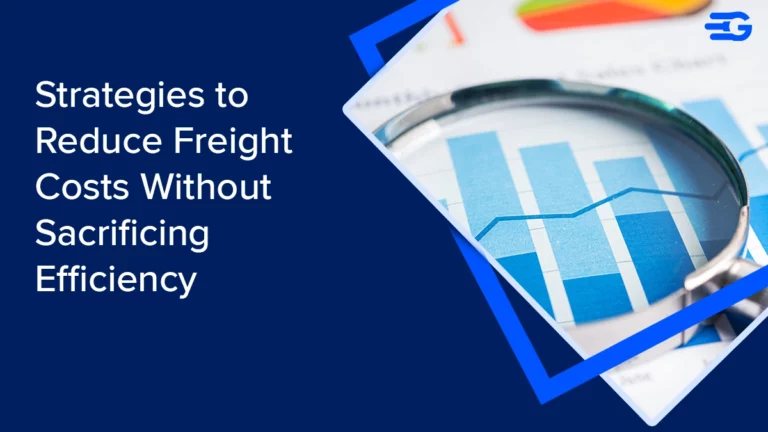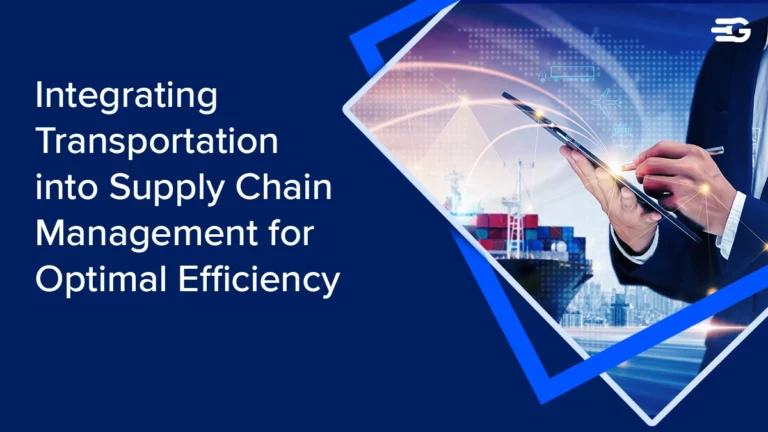Breaking Down Silos: The Importance of Integration in Modern Supply Chains
In today’s supply chain and logistics landscape, the prevalence of silos within operations presents a significant challenge. These isolated departments like the Logistics, Sales, Purchase, Factory, Billing, and Finance, etc often operate autonomously, leading to communication gaps, inefficiencies, and missed opportunities. Manual processes exacerbate these issues, impacting overall performance and competitiveness.
The imperative to break down silos and foster collaboration within supply chain management is crucial. By breaking down silos and by automating tasks such as inventory management, order processing, and logistics tracking, companies can streamline operations, reduce errors, and improve overall efficiency.
As a Customer Success Manager at GoComet, I’ve worked with large enterprises and Supply Chain veterans and experienced firsthand the transformative impact of integration solutions on improving processes, driving growth, and boosting competitiveness in the industry.
In this article, we’ll delve into the benefits of integration, share real-world examples, and provide strategies for achieving seamless integration within supply chain operations.
Understanding Silos in Supply Chains
Identifying Silos and Their Impact
One particular challenge stands out: the prevalence of silos within supply chain operations. These isolated departments not only operate independently but also use different solutions, like Logistics using TMS, Sales using CRM, etc.
Various teams rely on specialized software to streamline processes and improve efficiency.
- The Logistics team commonly utilizes Transportation Management Systems (TMS) Warehouse Management Systems (WMS) or Oracle transportation management, and Microsoft Dynamics 365 to optimize transportation routes and manage warehouse operations.
- The Purchase team often utilizes Enterprise Resource Planning (ERP) software such as SAP or Oracle Cloud, NetSuite, and Epicor ERP to manage procurement processes and supplier relationships.
- The Factory team may use Manufacturing Execution Systems (MES), Infor CloudSuite to monitor production activities and ensure timely execution of orders.
- Billing and Finance Departments typically utilize Enterprise Resource Planning (ERP) or Billing and Invoicing software such as QuickBooks and Oracle NetSuite, Workday to manage billing processes, invoicing, and financial transactions efficiently.
However, through concerted efforts to break down these silos and foster collaboration, I’ve seen remarkable improvements in overall performance.
In addressing this issue, many companies turn to software solutions that automate procurement processes and streamline operations. For instance, our software, GoComet, offers end-to-end procurement visibility through a single dashboard.
By automating tasks such as procuring rates from logistics service providers, sending automated notifications, and generating reports for audit purposes, significant efficiencies can be realized.
However, even with such software, manual intervention is often required to input data, particularly during the initial setup phase.
This is where integration with the customer’s ERP system becomes crucial. Many logistics companies maintain their own ERP systems to store data. When adopting software solutions, they often find themselves in a cycle of manually entering information into the new software, and then manually transferring it back into their ERP system. However, this process can be streamlined through integration.
By integrating systems, companies can seamlessly transfer data between their ERP and other software solutions. This eliminates the need for manual input, as data can be automatically synced between platforms. This not only saves time and reduces errors but also ensures that all systems are operating with the most up-to-date information.
“For example, one of our Indian clients utilizes the GoInvoice module to Automate their freight invoice process for the Logistics team, intended for automating invoice matching against contracted rates facilitating approval processes, and identifying overcharged invoices.
Following approval, the Finance team handles payments.
To streamline this process, they integrated GoComet with their billing software, providing visibility into approved, pending, and rejected invoices, along with insights into overpayments. This software solution GoComet simplifies tracking and management across departments seamlessly.”
Integration in modern supply chains is not merely about connecting different departments; it’s about creating a cohesive ecosystem where data flows seamlessly, decisions are aligned, and resources are optimized. This approach enables real-time visibility, agility in response to market fluctuations, and enhanced customer satisfaction.
The Benefits of an Integrated Supply Chain
Integrating systems in supply chain operations offers several other notable benefits:
- Simplicity:
- Integration streamlines data transfer by directly connecting to ERP and software solution systems, eliminating the need for intermediary file transfer servers and related processes. This simplifies the overall data exchange process, making it more efficient and less prone to errors.
- Resource Efficiency:
- With the adoption of top supply chain management software, managing API-driven transactions requires fewer resources, enabling supply chain managers to allocate their scarce resources more efficiently. These software solutions streamline processes, allowing for better utilization of personnel and financial resources. This not only results in significant cost savings but also enhances overall operational efficiency, helping businesses stay competitive in a fast-paced environment.
- Real-time Data Connection:
- Integration enables the collection and sharing of real-time data across parties involved in the supply chain. For instance, real-time shipment status updates can be communicated seamlessly, providing stakeholders with up-to-date information for better decision-making and coordination.
- Increased Efficiency through Automation:
- Integration facilitates the automation of various supply chain processes, such as sending pick-up requests to carrier systems. By automating manual tasks, the supply chain becomes more streamlined, minimizing human error, increasing visibility, and improving overall efficiency.
- Compatibility with Future Technologies:
- Integration solutions are highly compatible with emerging technologies, such as IoT (Internet of Things). With nearly 90% of developers already utilizing integration in some form, supply chain companies can easily integrate with new technologies as they emerge, ensuring future readiness and adaptability.
Case Study 1:
One of our European clients initially faced challenges with manual data input despite adopting GoShipment for their procurement needs. With GoShipment one can Collaborate with multiple stakeholders to better manage their shipments, receive updates on delays in tasks via automatic comparison of planned dates vs actual dates, and Upload Shipping Documents on the cloud and easily access them from anywhere.
With a monthly shipment volume of 1500, the manual input process was time-consuming and prone to errors. Upon integrating GoShipement with their ERP system using APIs, all 1500 purchase orders were automatically generated, eliminating the need for manual entry.
This not only saved valuable man-hours but also allowed the client to redirect resources toward other operational tasks, ultimately enhancing overall efficiency and productivity.
Strategies for Achieving Supply Chain Integration
- Understand the software solution:
- Before integrating with any software solution, companies should thoroughly understand its features and capabilities to ensure it meets their requirements.
- Use the software firsthand:
- Companies should use the software themselves for a period of time to identify its strengths and weaknesses in relation to their processes.
- Build a roadmap for integration:
- Based on the understanding of the software and its fit with their requirements, companies should create a roadmap for integration.
- Robust testing:
- Once the integration code is written, conduct thorough testing of integration to identify and resolve any issues before deployment. Testing should include functional testing, performance testing, and security testing to ensure reliability and scalability.
- Continuous monitoring and optimization:
- Monitor integration performance continuously and optimize processes to improve efficiency and reliability. This includes monitoring system health, analyzing performance metrics, and identifying areas for improvement.
Case Study 2:
One of our US-based client opted for the GoTrack for End-to-end shipment container tracking. They were advised to use GoTrack for 2-3 weeks to evaluate its suitability before integration.
Once familiar with the software, they proceeded with API integration. They integrated their ERP with GoTrack to push MBL and carrier details and pull tracking information back into their ERP. Before GoLive, they did thorough testing of the API.
By integrating with GoTrack, the client eliminated manual work by implementing schedule-based API integration, pushing and pulling information at certain intervals.
Case Study 3:
Another example comes from one of our Asian clients, who opted to leverage GoShipment to enhance collaboration among multiple stakeholders and streamline shipment management while consolidating shipping documents.
Initially, they were advised to familiarize themselves with the platform’s features before integrating it with their ERP system. Tailoring the workflow to their specific needs, the process involved recording purchase orders by the Shipper, contract selection by the logistics team upon confirmed shipments, sharing container tracking information by Freight forwarders, and customer notifications upon shipment arrival.
By independently utilizing the platform, they gained firsthand experience of its functionalities, including seamless notifications and centralized document storage. Subsequently, with a thorough understanding of the GoShipment module, they seamlessly integrated it with their ERP, further simplifying their operations.
Conclusion: The Future of Integrated Supply Chains
The future of integrated supply chains is promising, driven by qualitative insights and statistics showcasing integration’s transformative impact on business performance.
Integrated systems lead to improved efficiency, agility, and profitability.
“For instance, a McKinsey study reveals that companies with highly integrated supply chains experience a significant 20% increase in profitability compared to their counterparts.”
Challenges posed by siloed operations are being addressed through collaborating efforts and software solutions like GoComet, offering end-to-end visibility and automation. Integration with ERP systems streamlines processes, eliminates manual tasks, and ensures data accuracy.
The momentum towards integration is expected to grow, supported by technology adoption and complex supply chains.
“Nearly 90% of developers use integration, paving the way for leveraging emerging technologies like IoT for enhanced visibility and agility.”
Continued investment in understanding software, robust testing, and optimization is crucial for unlocking integrated supply chains’ full potential.
Embracing integration drives innovation, improves efficiency, and offers a competitive edge in today’s dynamic marketplace, leading to new levels of efficiency, resilience, and competitiveness in modern supply chains.






